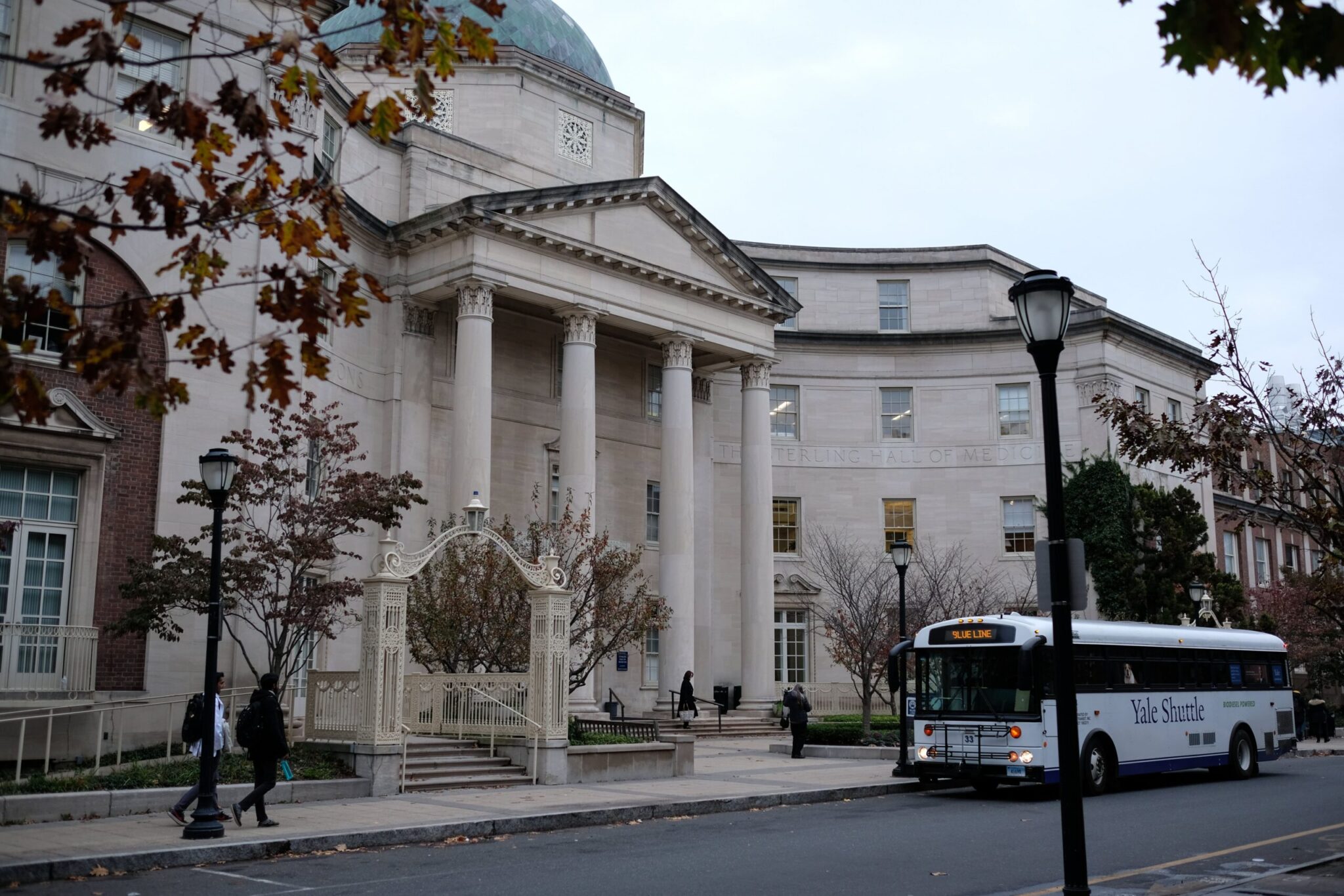Yale researchers use neural networks to predict underage drinking risk in teens
Neural networks uncovered through a longitudinal study could help predict underage drinking risk in teenagers.

Eric Wang, Senior Photographer
In a study published in August, Yale researchers discovered neural networks that could predict underage drinking behavior and risk.
By utilizing functional magnetic resonance imaging, or fMRI, and longitudinal data on teens’ drinking habits, psychiatry professor Sarah Yip and her team found that different brain network patterns might help anticipate current and future drinking risk for adolescents.
For years, researchers were restricted to observing isolated brain regions rather than how brain cells connect and work together, Yip said. Now, access to machine learning and the ability to compile large amounts of data have allowed scientists to gain a deeper understanding of how the brain functions.
“It allows us to simultaneously test all possible hypotheses,” Yip explained to the News. “Not only are we generating predictions of someone’s future alcohol use, but in doing so, we are also identifying the connections that are the basis for these behaviors.”
Yip’s study included 1,359 adolescents from the IMAGEN consortium, a longitudinal study conducted in Europe that periodically measured participants’ brain activity when they were 14-years-old and, again, at 19-years old. The researchers also conducted behavioral assessments — looking at the participants’ drinking habits — at ages 16, 19 and 23.
“This was an unprecedented size at the time, especially with this age group,” said Sarah Lichenstein, an associate professor of psychiatry and one of the co-authors of the article.
Their analysis suggests that there are at least two notable neural pathways related to predicting alcohol use: the inhibitory and the reward pathways.
During adolescence, both these pathways undergo intense development, experts say.
“That’s why adolescence is this classic time period of risk-taking, whether that be experimenting with drugs of abuse or even new social groups,” Yip said.
The inhibitory pathway, Yip said, is the “brake system” of the brain, whereas the reward pathway signals “go.” If a teen’s reward pathway is more developed than their inhibitory pathway, they are more likely to pursue risky behaviors such as drinking, according to the study’s findings.
The study also suggests that these two pathways capture important sex differences in adolescent brain development that could explain differences in their drinking behavior.
The report also found that patterns in the inhibitory pathway could determine the likelihood of adolescent males engaging in underage drinking.
According to psychiatry professor Sarah Liechtenstein, the higher likelihood of risky underage drinking behavior in boys might be due to the lack of development of their inhibitory brain development as compared to girls. Brain development in girls tends to happen earlier than in boys, Liechtenstein said.
“We know that adolescent brain development progresses at different rates between boys and girls,” she said.
In the future, machine learning models that use brain connections to predict drinking habits might be possible, the researchers told the News. But for now, they said, the research is not at the point to draw comprehensive, accurate predictions.
“The goal of the machine learning approach is to generate a prediction in unseen data, which means that the model you build is much more rigorous,” Yip said. “Right now, we are using advanced predictive models to understand biological mechanisms.”
While machine learning can offer insight into fundamental biological systems, they are often limited by an unrepresentative dataset. For example, the IMAGEN consortium that the study used was primarily made up of white Europeans.
But ongoing longitudinal studies can help increase the diversity of the data. Lichenstein said that the IMAGEN study is “a precursor” to more longitudinal studies, such as the Adolescent Brain Cognitive Development, or ABCD, study.
The ABCD study currently measures the development of nearly 12,000 children starting at the age of 9 and into adulthood. Compared to previous studies, Liechtenstein added, the ABCD study is larger and more representative of the United States population.
According to David Fiellin, the director of the Program of Addiction Medicine at Yale who was not involved in the study, the results can help researchers learn more about the biological foundations of addiction in the brain.
Along with ongoing clinical developments, he said, the results could help scientists develop individualized treatments for people struggling with substance abuse.
“Oftentimes, interventions are more effective in some individuals and less effective in other individuals, and so we end up with an average result,” Fiellin said. “This type of work really helps us think through why these interventions may work in certain subpopulations — perhaps differentiate by age or by sex. We’re developing and modifying and adapting interventions for specific populations over time.”
According to the 2021 national survey on drug use and health, 13.4 million youth between the ages of 12 and 20 reported that they have had at least one alcoholic drink in their lives.







